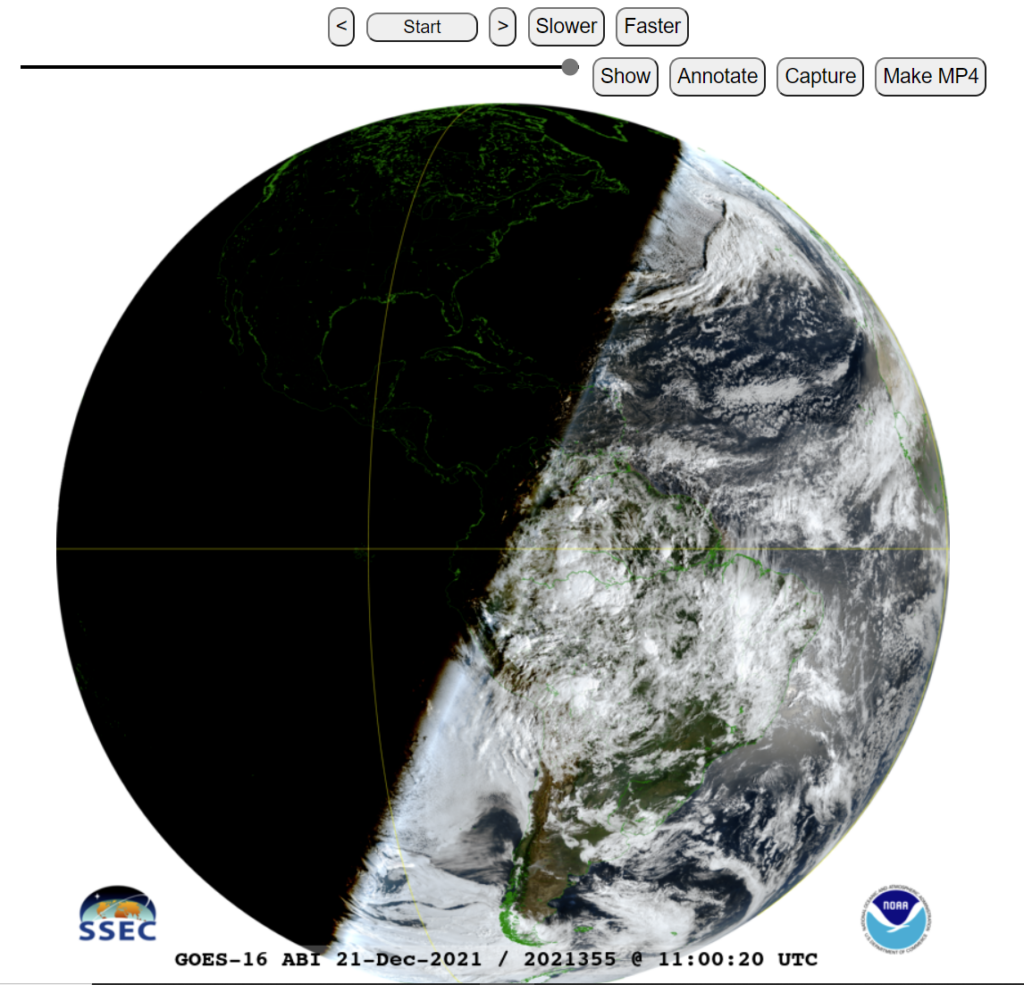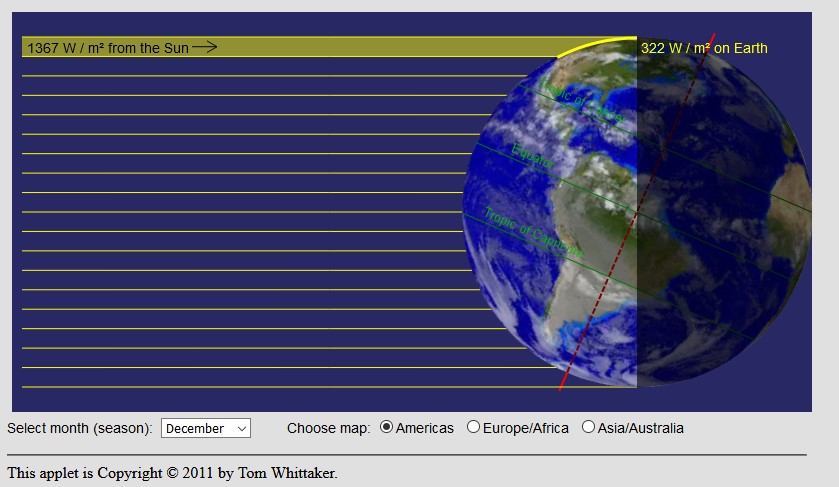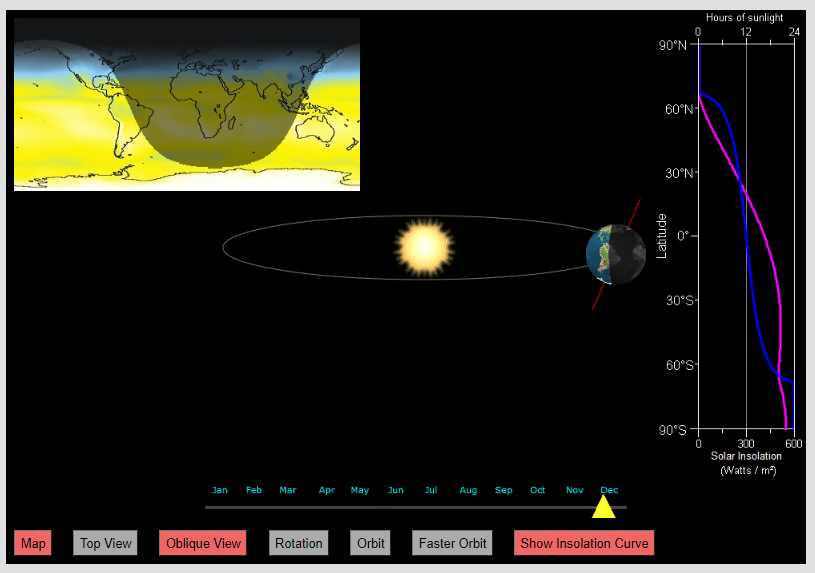Fall to Spring Equinox 2022
By animating daily NOAA GOES-17 ABI Full Disk true color imagery, how the Earth is illuminated over time can be seen. For example, the minimum in incoming solar radiation in the Northern Hemisphere associated with the Winter Solstice. For details, see “What is a Solstice?” by SciJinks. Or this NOAA https://www.noaa.gov/education/news/share-your-solstice-sunset-with-noaa-education post.
14 UTC loops from the fall Equinox of 2021 to the Spring Equinox of 2022. Also as an animated gif. These posted GOES ABI Full Disk imagery are only showing a small number of the pixels, for a fuller resolution image at one time (20-March-2022).
The 16 bands of ABI from GOES-West and GOES-East from UW/CIMSS.
Interactive web page


An interactive web page with almost a years worth of GOES ABI Full Disk visible images at 11 UTC. The beginning date is the (northern hemisphere) summer solstice in 2021 and the end date is the winter solstice in 2021. A user can play the animation, as well as annotate the images. For example, draw lines along the terminator for different times of the year. One example might be to compare a solstice to an equinox. Can you estimate the day of the summery equinox? H/T Tom Whittaker, SSEC, for the webapp. Note that the app allows one to save an mp4 animation.


H/T
These images were made using NOAA data with geo2grid software, from UW-Madison, SSEC.

